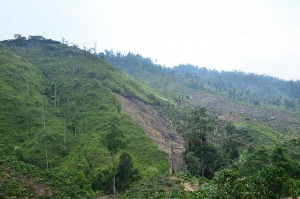By Peter Holmgren, originally published at CIFOR’s DG blog

We are all encouraged by current political commitments that aim to “end deforestation” or “halt natural forest loss” in the next decade. These commitments have been made within the Sustainable Development Goals (Goal 15, target 2), the New York Declaration on Forests and decisions by the UN Framework Convention on Climate Change.
But, against what reference should we monitor progress towards targets expressed in these commitments? And do we have the processes in place to deliver accurate findings?
In an earlier article I compared attempts to assess changes in the global forest with the story about blind men and the elephant. Differences in methods, definitions, completeness and field verifications inevitably led to entirely incomparable results between Global Forest Watch and the FAO Global Forest Resources Assessment.
These results are widely communicated and used as a reference in many political and economic analyses. In fact, there are few alternative sources of information on global forest change.
However, given the conflicting information, the risks of misperception and erroneous conclusions are obvious. To determine how deep the confusion goes, we need to further scrutinize these publicly funded assessment reports.
Here, I examine country-level data produced by FRA 2015 and the GFW. For FRA 2015 I have used the average annual forest area change for 2010–2015, and for GFW the average “tree cover loss” for 2010–2014, as reported using an assigned 30% canopy cover threshold in the algorithm.
The global totals are -3.3 Mha/yr for FRA 2015 and -19.8 Mha/yr for GFW, noting that the five-year average for GFW is higher than the -18 Mha reported for 2014.
To make the data easier to digest, I’ve extracted the 29 countries that had more than 20 Mha forest in 2005, according to FRA 2005. Together, these countries represent about 85% of the world’s forests. Their total forest area change in the period according to FRA is -2.2 Mha/yr, and the “tree cover loss” in GFW 16.4 Mha/yr. See the data table here.
Going country by country, it is clear that the discrepancies are caused by quite different situations on the ground. I decided to subjectively divide the 29 countries into five categories in an attempt to highlight why these gaps are so significant.
read full blog here











